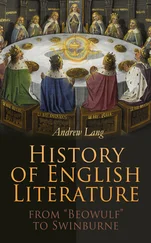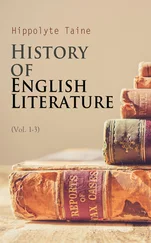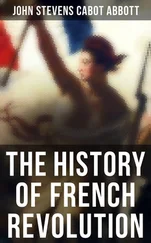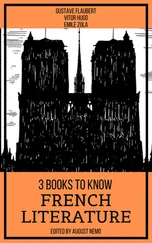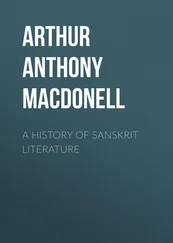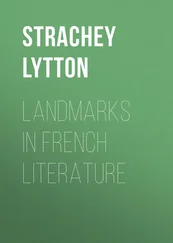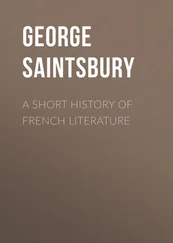Edward Dowden - A History of French Literature
Здесь есть возможность читать онлайн «Edward Dowden - A History of French Literature» — ознакомительный отрывок электронной книги совершенно бесплатно, а после прочтения отрывка купить полную версию. В некоторых случаях можно слушать аудио, скачать через торрент в формате fb2 и присутствует краткое содержание. Жанр: foreign_prose, foreign_home, Критика, Языкознание, foreign_antique, на английском языке. Описание произведения, (предисловие) а так же отзывы посетителей доступны на портале библиотеки ЛибКат.
- Название:A History of French Literature
- Автор:
- Жанр:
- Год:неизвестен
- ISBN:нет данных
- Рейтинг книги:3 / 5. Голосов: 1
-
Избранное:Добавить в избранное
- Отзывы:
-
Ваша оценка:
- 60
- 1
- 2
- 3
- 4
- 5
A History of French Literature: краткое содержание, описание и аннотация
Предлагаем к чтению аннотацию, описание, краткое содержание или предисловие (зависит от того, что написал сам автор книги «A History of French Literature»). Если вы не нашли необходимую информацию о книге — напишите в комментариях, мы постараемся отыскать её.
A History of French Literature — читать онлайн ознакомительный отрывок
Ниже представлен текст книги, разбитый по страницам. Система сохранения места последней прочитанной страницы, позволяет с удобством читать онлайн бесплатно книгу «A History of French Literature», без необходимости каждый раз заново искать на чём Вы остановились. Поставьте закладку, и сможете в любой момент перейти на страницу, на которой закончили чтение.
Интервал:
Закладка:
The poésie courtoise , moulded in form and inspired in its sentiment by the Provençal lyrics, lies within the compass of about one hundred and thirty years, from 1150 to 1280. The Crusade of 1147 served, doubtless, as a point of meeting for men of the North and of the South; but, apart from this, we may bear in mind the fact that the mediæval poet wandered at will from country to country and from court to court. In 1137, Louis VII. married Éléonore of Aquitaine, who was an ardent admirer of the poetry of courtesy. Her daughters inherited her taste, and themselves became patronesses of literature at the courts of their husbands, Henri de Champagne and Thibaut de Blois. From these courts, and that of Paris, this poetry of culture spread, and the earlier singers were persons of royal or noble rank and birth. The chief period of its cultivation was probably from 1200 to 1240. During the half-century before its sudden cessation, while continuing to be a fashion in courts and high society, it reached the wealthy bourgeoisie of the North. At Arras, where Jacques Bretel and Adam de la Halle, the hunchback, were eminent in song, it had its latest moments of splendour.
It is essentially a poetry of the intellect and of the imagination, dealing with an elaborated theory of love; the simple and spontaneous cry of passion is rarely heard. According to the amorous doctrine, love exists only between a married woman and the aspirant to her heart, and the art of love is regulated by a stringent code. Nothing can be claimed by the lover as a right; the grace of his lady, who is placed far above him, must be sought as a favour; for that favour he must qualify himself by all knightly virtues, and chief among these, as the position requires, are the virtues of discretion and patience. Hence the poet's ingenuities of adoration; hence often the monotony of artificial passion; hence, also, subtleties and curiosities of expression, and sought-out delicacies of style. In the earlier chansons some outbreak of instinctive feeling may be occasionally present; but, as the amorous metaphysics developed, what came to be admired was the skill shown in manipulating a conventional sentiment; the lady became an abstraction of exalted beauty, the lover an interpreter of the theory of love; the most personal of passions lost the character of individuality. Occasionally, as in the poems of the Châtelain de Couci, of Conon de Béthune, of Thibaut de Champagne, and of Adam de la Halle, something personal to the writer may be discerned; but in general the poetry is that of a doctrine and of a school.
In some instances the reputation of the lyrical trouvère was founded rather on his music than his verse. The metrical forms were various, and were gradually reduced to rule; the ballette , of Provençal origin, was a more elaborate rondet , consisting of stanzas and refrain; the estampie ( stampôn , to beat the ground with the foot) was a dancing-song; the lyric lai , virtually identical with the descort , consisted of stanzas which varied in structure; the motet , a name originally applied to pieces of church music, was freer in versification, and occasionally dealt with popular themes. Among forms which cannot be included under the general title of chansons, are those in dialogue derived from the Provençal literature; in the tenson or débat the two interlocutors put forth their opinions on what theme they may please; in the jeu parti one of the imagined disputants proposes two contrary solutions of some poetical or amorous question, and defends whichever solution his associate refuses to accept; the earliest jeu parti , attributed to Gace Brulé and Count Geoffroi of Brittany, belongs to the second half of the twelfth century. The serventois were historical poems, and among them songs of the crusades, or moral, or religious, or satirical pieces, directed against woman and the worship of woman. To these various species we should add the songs in honour of the saints, the sorrows of the Virgin uttered at the foot of the cross, and other devout lyrics which lie outside the poésie courtoise . With the close of the thirteenth century this fashion of artificial love-lyric ceased: a change passed over the modes of thought and feeling in aristocratic society, and other forms took the place of those found in the poésie courtoise .
II
FABLES, AND RENARD THE FOX
The desire of ecclesiastical writers in the Middle Ages to give prominence to that part of classical literature which seemed best suited to the purpose of edification caused the fables of Phædrus and Avianus to be regarded with special honour. Various renderings from the thirteenth century onwards were made under the title of Isopets , 7 7 The earlier "Romulus" was the name of the supposed author of the fables of Phædrus, while that of Phædrus was still unknown.
a name appropriated to collections of fables whether derived from Æsop or from other sources. The twelfth-century fables in verse of Marie de France, founded on an English collection, include apologues derived not only from classical authors but from the tales of popular tradition. A great collection made about 1450 by Steinhoewel, a physician of Ulm, was translated into French, and became the chief source of later collections, thus appearing in the remote ancestry of the work of La Fontaine. The æsthetic value of the mediæval fables, including those of Marie de France, is small; the didactic intention was strong, the literary art was feeble.
It is far otherwise with the famous beast-epic, the ROMAN DE RENARD. The cycle consists of many parts or "branches" connected by a common theme; originating and obscurely developed in the North, in Picardy, in Normandy, and the Isle of France, it suddenly appeared in literature in the middle of the twelfth century, and continued to receive additions and variations during nearly two hundred years. The spirit of the Renard poems is essentially bourgeois; the heroes of the chansons de geste achieve their wondrous deeds by strength and valour; Renard the fox is powerful by skill and cunning; the greater beasts—his chief enemy the wolf, and others—are no match for his ingenuity and endless resources; but he is powerless against smaller creatures, the cock, the crow, the sparrow. The names of the personages are either significant names, such as Noble, the lion, and Chanticleer, the cock, or proper names, such as Isengrin, the wolf, Bruno, the bear, Tibert, the cat, Bernard, the ass; and as certain of these proper names are found in the eastern district, it has been conjectured that a poet of Lotharingia in the tenth century first told in Latin the wars of fox and wolf, and that through translations the epic matter, derived originally from popular tradition, reached the trouvères of the North. While in a certain degree typical figures, the beasts are at the same time individual; Renard is not the representative merely of a species; he is Renard, an individual, with a personality of his own; Isengrin is not merely a wolf, he is the particular wolf Isengrin; each is an epic individual, heroic and undying. Classical fable remotely exerted an influence on certain branches of the Romance; but the vital substance of the epic is derived from the stores of popular tradition in which material from all quarters—the North of Europe and the Eastern world—had been gradually fused. In the artistic treatment of such material the chief difficulty lies in preserving a just measure between the beast-character and the imported element of humanity. Little by little the anthropomorphic features were developed at the expense of verisimilitude; the beast forms became a mere masquerade; the romances were converted into a satire, and the satire lost rather than gained by the inefficient disguise.
Читать дальшеИнтервал:
Закладка:
Похожие книги на «A History of French Literature»
Представляем Вашему вниманию похожие книги на «A History of French Literature» списком для выбора. Мы отобрали схожую по названию и смыслу литературу в надежде предоставить читателям больше вариантов отыскать новые, интересные, ещё непрочитанные произведения.
Обсуждение, отзывы о книге «A History of French Literature» и просто собственные мнения читателей. Оставьте ваши комментарии, напишите, что Вы думаете о произведении, его смысле или главных героях. Укажите что конкретно понравилось, а что нет, и почему Вы так считаете.


